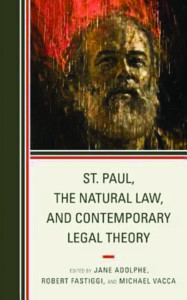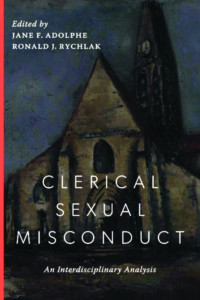
Sunday, February 14, 2021
Feast of St. Valentine (early 200s to AD 269 or 270), Patron of Love, Young People, Happy Marriages
St. Valentine, officially known as St. Valentine of Rome, is a third-century Roman saint widely celebrated on February 14 and commonly associated with “courtly love.”
Although not much of St. Valentine’s life is reliably known, it is generally agreed that St. Valentine was martyred in about 270 AD and then buried on the Via Flaminia to the north of Rome. In 1969, the Roman Catholic Church removed St. Valentine from the General Roman Calendar, because so little is known about him. However, the Church still recognizes him as a saint, listing him in the February 14 spot of Roman Martyrology. (link)
One common story about St. Valentine is that at one point of his life, as the former Bishop of Terni, Narnia and Amelia, he was placed on house arrest by Judge Asterius. While discussing religion and faith with the Judge, Valentine pledged the validity of Jesus. The judge immediately put Valentine and his faith to the test. St. Valentine was presented with the judge’s blind daughter and told to restore her sight. If he succeeded, the judge vowed to do anything for Valentine. Placing his hands onto her eyes, Valentine restored the child’s vision.
Judge Asterius was humbled and obeyed Valentine’s requests. Asterius broke all the idols around his house, fasted for three days and became baptized, along with his family and entire 44-member household. The now faithful judge then freed all of his Christian inmates.
St. Valentine was evidently later arrested again for continuing to try to convert people to Christianity. He was sent to Rome under the emperor Claudius Gothicus (Claudius II).
The story tells that St. Valentine was imprisoned for marrying Christian couples and aiding Christians being persecuted by Claudius in Rome. Both acts were considered serious crimes. A relationship between the saint and emperor began to grow, until Valentine attempted to convince Claudius of Christianity. Claudius became enraged and sentenced Valentine to death, commanding him to renounce his faith or be beaten with clubs and beheaded.
St. Valentine refused to renounce his faith and Christianity and was executed outside the Flaminian Gate on February 14, 269. (However, other tales of St. Valentine’s life claim he was executed either in the year 270, 273 or 280.)
Other accounts of St. Valentine’s arrests tell that he secretly married couples so husbands wouldn’t have to go to war.
Another variation of the legend of St. Valentine says he refused to sacrifice to pagan gods, was imprisoned and while imprisoned he healed the jailer’s blind daughter. On the day of his execution, he left the girl a note signed, “Your Valentine.”
Pope Julius I is said to have built a church near Ponte Mole in his memory, which for a long time gave name to the gate now called Porta del Popolo.
The romantic nature of Valentine’s Day may have derived during the Middle Ages, when it was believed that birds paired couples in mid-February. According to English 18th-century antiquarians Alban Butler and Francis Douce, Valentine’s Day was most likely created to overpower the pagan holiday, Lupercalia. Although the exact origin of the holiday is not widely agreed upon, it is widely recognized as a day for love, devotion and romance.
Whoever he was, Valentine did really exist, because archaeologists have unearthed a Roman catacomb and an ancient church dedicated to St. Valentine. In 496 AD, Pope Gelasius marked February 14th as a celebration in honor of his martyrdom.
Relics of St. Valentine can be found all over the world. A flower-crowned skull of St. Valentine can be found in the Basilica of Santa Maria in Cosmedin, Rome. In 1836, other relics were exhumed from the catacombs of St. Hippolytus on the Via Tiburtina and were identified as Valentine’s. These were transported for a special Mass dedicated to those young and in love.
In 1836, Fr. John Spratt received a gift from Pope Gregory XVI, a “small vessel tinged” with St. Valentine’s blood. This gift now stands placed in Whitefriar Street Church in Dublin, Ireland. Other alleged relics were found in Prague in the Church of St Peter and Paul at Vysehrad; in the parish church of St. Mary’s Assumption in Chelmno Poland; at the reliquary of Roquemaure in France; in the Stephansdom in Vienna; in Balzan in Malta and also in Blessed John Duns Scotus’ church in the Gorbals area of Glasgow, Scotland.
St. Valentine is the Patron Saint of affianced couples, bee keepers, engaged couples, epilepsy, fainting, greetings, happy marriages, love, lovers, plague, travelers, and young people. He is represented in pictures with birds and roses and his feast day is celebrated on February 14.
A special St. Valentine Prayer (link)
More on the History of St. Valentine
By Father William Saunders (link)
Who was St. Valentine and how did he come to inspire Valentine’s Day?
In the early martyrologies, three different St. Valentines are mentioned, all sharing February 14 for a feast day.
Unfortunately, the historical record is sparse.
The first St. Valentine was a priest and physician in Rome. He along with St. Marius and his family comforted the martyrs during the persecution of Emperor Claudius II, the Goth. Eventually, St. Valentine was also arrested, condemned to death for his faith, beaten with clubs, and finally beheaded on February 14, AD 270. He was buried on the Flaminian Way. Later, Pope Julius I (333-356) built a basilica at the site which preserved St. Valentine’s tomb. Archeological digs in the 1500s and 1800s have found evidence of the tomb of St. Valentine. However, in the 13th century, his relics were transferred to the Church of St. Praxedes near the Basilica of St. Mary Major, where they remain today. Also, a small church was built near the Flaminian Gate of Rome which is now known as the Porta del Popolo but was called in the 12th century “the Gate of St. Valentine,” as noted by the early British historian William Somerset (also known as William of Malmesbury, d. 1143), who ranks after St. Bede in authority.
The second St. Valentine was the Bishop of Interamna (now Terni, located about 60 miles from Rome). Under the orders of Prefect Placidus, he too was arrested, scourged, and decapitated, again suffering persecution during the time of Emperor Claudius II.
The third St. Valentine suffered martyrdom in Africa with several companions. However, nothing further is known about this saint.
In all, these men, each named St. Valentine, showed heroic love for the Lord and His Church.
The popular customs of showing love and affection on St. Valentine’s Day is almost a coincidence with the feast day of the saint: During the Medieval Age, a common belief in England and France was that birds began to pair on February 14, “half-way through the second month of the year.” Chaucer wrote in his “Parliament of Foules” (in Middle English): “For this was on Seynt Valentyne’s day, When every foul cometh ther to choose his mate.” For this reason, the day was dedicated to “lovers” and prompted the sending of letters, gifts, or other signs of affection.
Another literary example of St. Valentine’s Day remembrances is found in Dame Elizabeth Brews “Paston Letters” (1477), where she writes to the suitor, John Paston, of her daughter, Margery: “And, cousin mine, upon Monday is St. Valentine’s day and every bird chooseth himself a mate, and if it like you to come on Thursday night, and make provision that you may abide till then, I trust to God that ye shall speak to my husband and I shall pray that we may bring the matter to a conclusion.”
In turn, Margery wrote to John: “Unto my right well beloved Valentine John Paston, Squyer, be this bill delivered. Right reverend and worshipful and my right well beloved Valentine, I recommend me unto you, full heartily desiring to hear of your welfare, which I beseech Almighty God long for to preserve until His pleasure and your heart’s desire.” While speaking of the amorous flavor of Valentine’s Day, no mention is made of the saint.
While it seems that the exchange of “valentines” is more the result of secular custom rather than the memory of St. Valentine, and that the celebration has been further paganized with cupids and the like, there is a Christian message that should be remembered.
The love of our Lord, depicted beautifully in the image of His most Sacred Heart, is a sacrificial, self-less, and unconditional love. Such is the love that each Christian is called to express in his own life, for God and neighbor.
Clearly, St. Valentine, no matter which one, showed such a love, bearing witness to the faith in his dedication as a priest and in the offering of his own life in martyrdom.
On this Valentine’s day, looking to the example of this great saint, each person should offer again his love to the Lord, for only by doing so can he properly love those who are entrusted to his care and any other neighbor.
Each person should again pledge his love to those loved ones, praying for their intentions, promising fidelity to them, and thanking them for their love in return.
Never forget Jesus said, “This is my commandment: love one another as I have loved you. There is no greater love than this: to lay down one’s life for one’s friends” (Jn 15:12-13).
St. Valentine fulfilled this command, and may we do the same.
Our “Top Ten” People of 2020: #6, Prof. Jane Adolphe
The year 2020 was one many people say they would like to erase from memory. Yet, many good people did many good and noble things in the year 2020, and Inside the Vatican, this year as in past years, recognizes here just a few of them.
Obviously, these people we have chosen to highlight are not the only people worthy of recognition, but we think each is an example, an exemplar, in differing ways. Of course, there are millions of mothers caring for sick children, millions of fathers caring for their families, thousands of legislators attempting to write just laws, countless artists striving to represent the mystery of divine truth to a world of hardened hearts. We honor them all! Still, we offer these 10 men and women as exemplary men and women, who have lived (and some of whom have died), with courage, honor, charity, tenderness, faith, generosity. In this way, these 10 have shown us the way, no matter how troubled our times may be. —RM

Professor Jane Adolphe
A Canadian civil and canon lawyer at the Holy See
Top Ten 2020 #6
A tireless advocate for victims of abuse and persecution
Jane Adolphe is a Catholic international human rights lawyer, and Professor of Law at Ave Maria School of Law (AMSL) in Naples, Florida, USA, with four law degrees: licentiate and doctorate in canon law (J.C.L/J.C.D), common law (LL.B), and civil law (B.C.L.) as well as a Bachelor of Arts. She began her legal career clerking with the Court of Appeal and Queens Bench in Calgary and the law firm Bennett Jones Verchere, then prosecuted criminal cases for the Alberta Crown Prosecutor’s Office. After that, she studied canon law and began teaching law at AMSL (2001 until the present).
Then, after working as an outside consultant to the Holy See’s Secretariat of State, Section for Relations with States (2003-2011), she entered the same section as an “Expert” to collaborate on work related to human rights’ treaties ratified by the Holy See, most notably the Convention on the Rights of the Child and its Optional Protocol on the Sale of Children, Child Prostitution and Child Pornography.
Dr. Adolphe’s term with the Holy See, which ended with her resignation in 2020, coincided with a series of challenges and changes that will forever mark, she says, the Catholic Church — and her life. Having entered during the final years of Pope Benedict VI’s papacy, she lived in Rome and worked in the Apostolic Palace, in Vatican City State, during amendment of its laws and during the following events:
 2012 — Vatileaks I: the conviction of the Pope’s butler and accomplice
2012 — Vatileaks I: the conviction of the Pope’s butler and accomplice
2013 — Resignation of Pope Benedict VI
2013 — Election of Pope Francis
2015 — Trial set for a former nuncio (deceased before trial) on child pornography and child sex abuse charges
2015 — Vatileaks II: the trial and conviction of a monsignor and lay woman
2017 — Trial and conviction of a lay person for diverting charitable funds to renovate a cardinal’s apartment
2018 — Conviction of a former Vatican diplomat for possession of child pornography
2018 — The McCarrick scandal
2019 — The London property investigation, and police raid of the Offices of the Secretariat of State
 Despite the illnesses and deaths of her parents back in her native Canada within two years of each other, in 2018 and 2020, Dr. Adolphe, in her capacity as Professor of AMSL, was able to plan and organize multiple international conferences on topics of interest to the Holy See, which led to publications that she co-edited: The Persecution of Christians in the Middle East: Prevention, Prohibition, and Prosecution (Angelico Press: 2018); and Equality and Non-Discrimination: Catholic Roots, Current Challenges (Pickwick: 2019).
Despite the illnesses and deaths of her parents back in her native Canada within two years of each other, in 2018 and 2020, Dr. Adolphe, in her capacity as Professor of AMSL, was able to plan and organize multiple international conferences on topics of interest to the Holy See, which led to publications that she co-edited: The Persecution of Christians in the Middle East: Prevention, Prohibition, and Prosecution (Angelico Press: 2018); and Equality and Non-Discrimination: Catholic Roots, Current Challenges (Pickwick: 2019).
 But the “most challenging” book she produced and co-edited, she says, was the 2020 volume Clerical Sexual Misconduct: An Interdisciplinary Analysis (Cluny) provoked, as it was, by the events of 2018, and the contradiction between efforts to protect victims from clerical-sexual abuse, the majority of whom were adolescent males and seminarians, while some sought to “mainstream” homosexual acts as a “good” within the Church.
But the “most challenging” book she produced and co-edited, she says, was the 2020 volume Clerical Sexual Misconduct: An Interdisciplinary Analysis (Cluny) provoked, as it was, by the events of 2018, and the contradiction between efforts to protect victims from clerical-sexual abuse, the majority of whom were adolescent males and seminarians, while some sought to “mainstream” homosexual acts as a “good” within the Church.
Dr. Adolphe recounts the most “devastating” situation she encountered during her tenure at the Vatican: in 2017, Italian journalists exposed the alleged sexual corruption of adolescent boys dating back to 2012 in the pre-seminary of Vatican City State. She remained steadfast in her efforts to ensure that a Vatican investigation be opened. The case is currently before the courts in Vatican City State. “There’s a problem of clericalism in the Roman Curia, especially as embedded in the court setting,” comments Dr. Adolphe, “but I am very encouraged by Pope Francis’s ongoing efforts toward making the Curia more humanized and professionalized to allow for the development of all its employees.”
“If I were to sum up my time in Vatican City State,” Dr. Adolphe says, “I would quote St. Paul in his Second Letter to the Corinthians: ‘For as we share abundantly in Christ’s sufferings, so through Christ we share abundantly in comfort too.’”







Facebook Comments